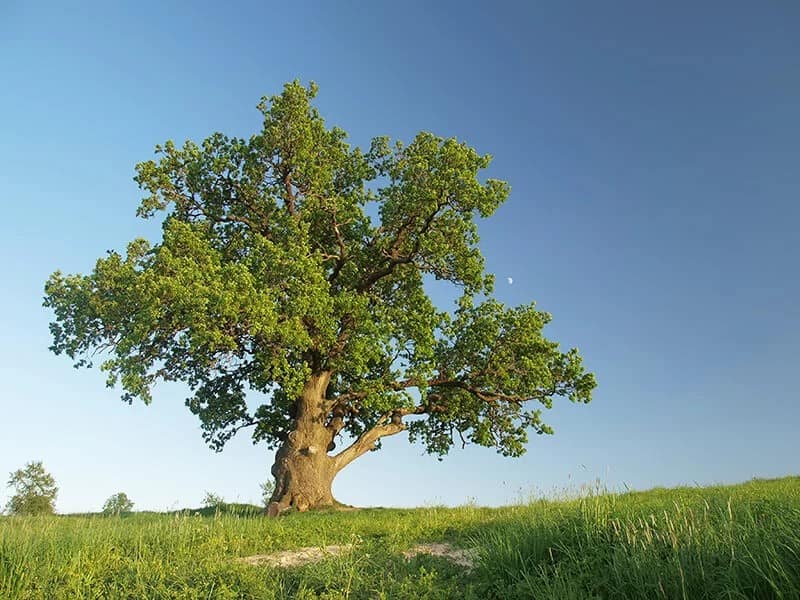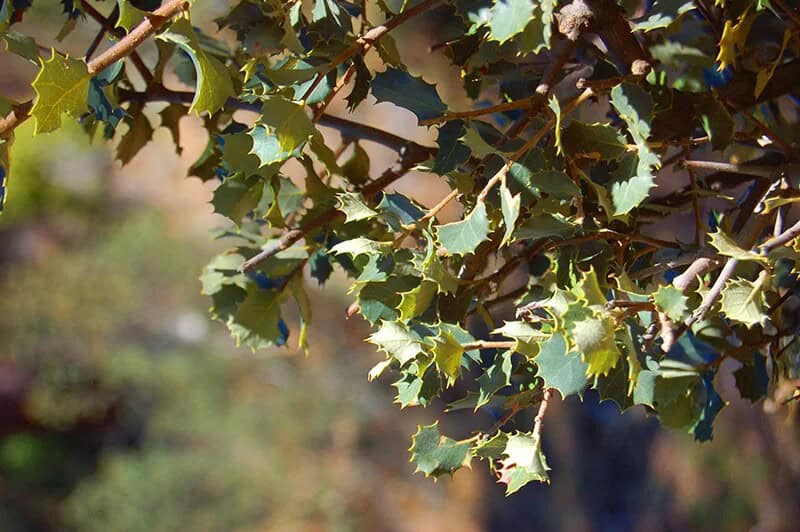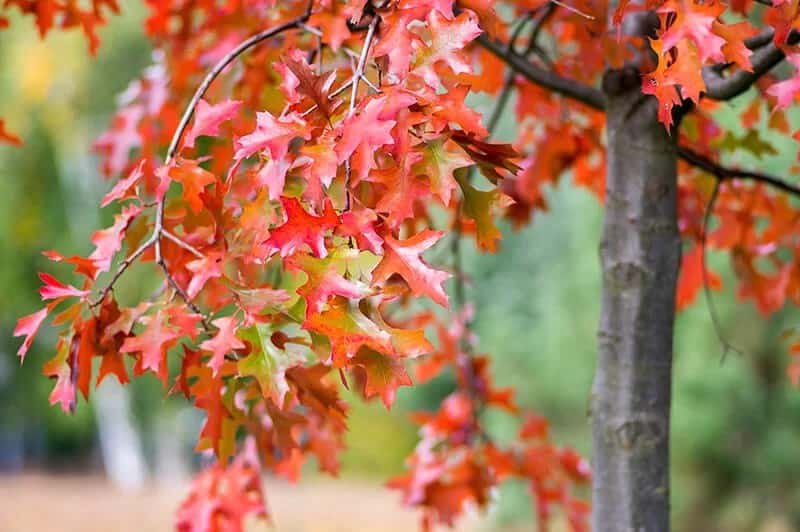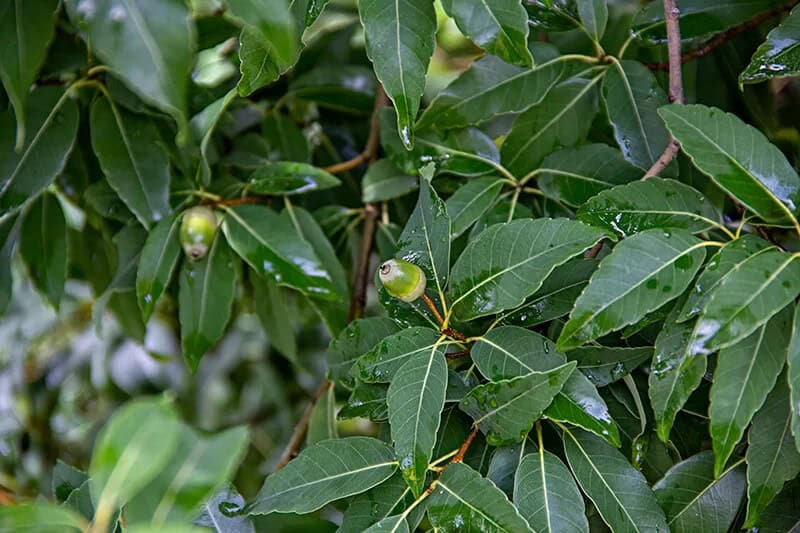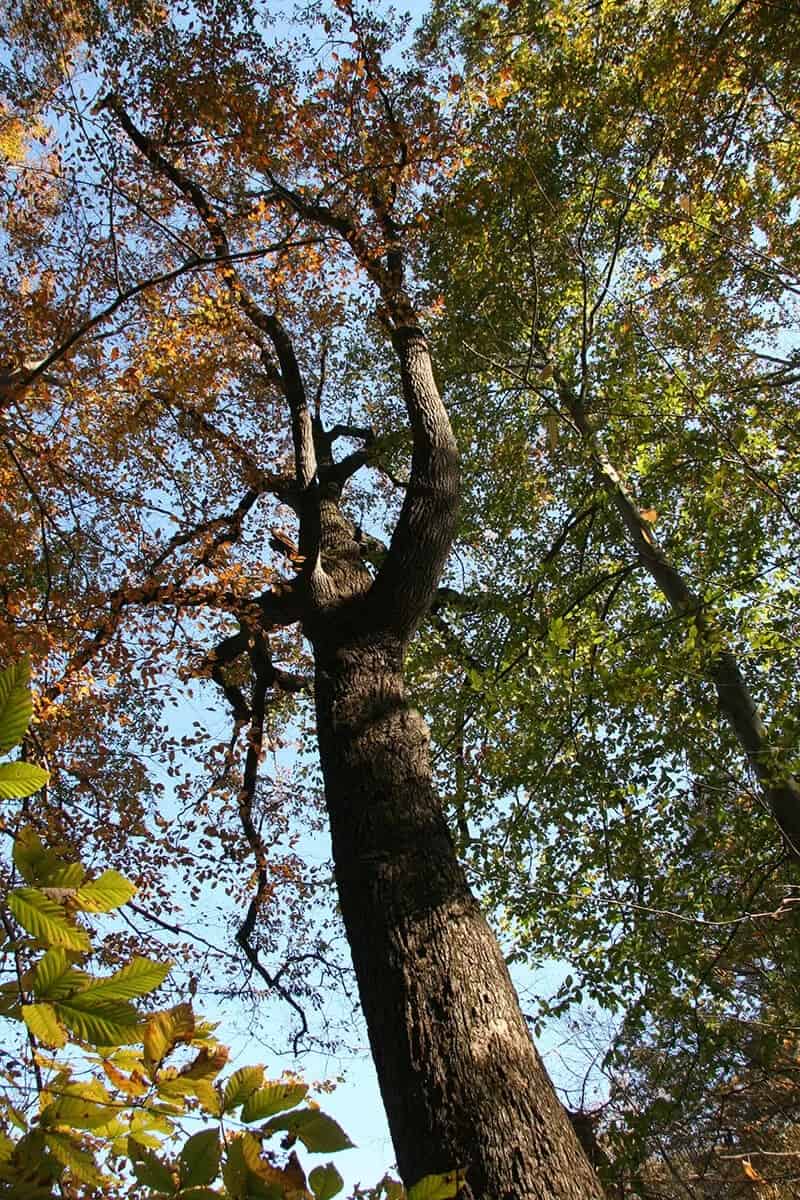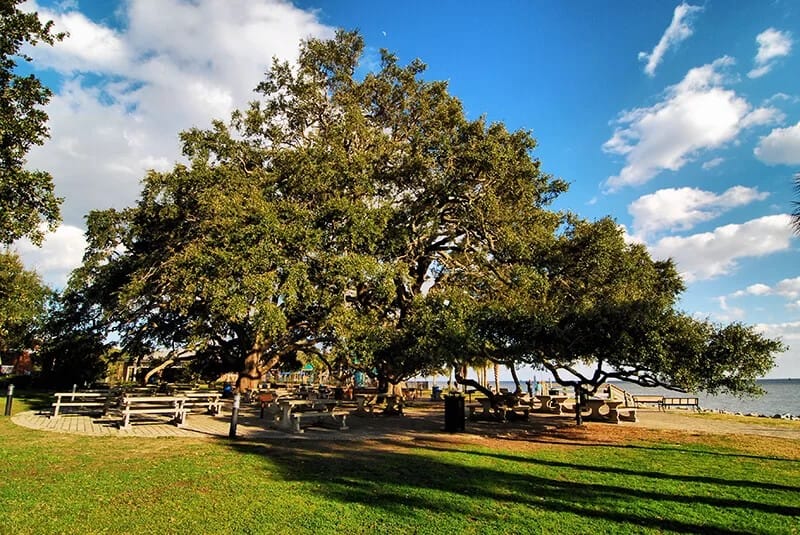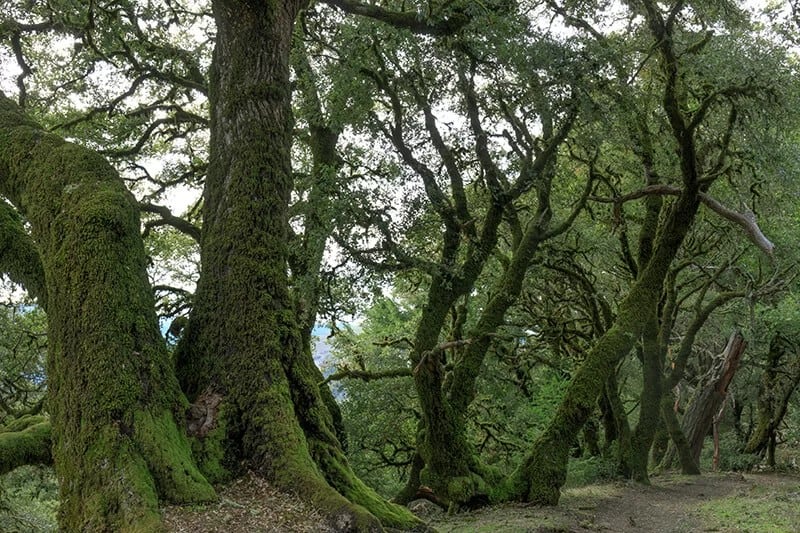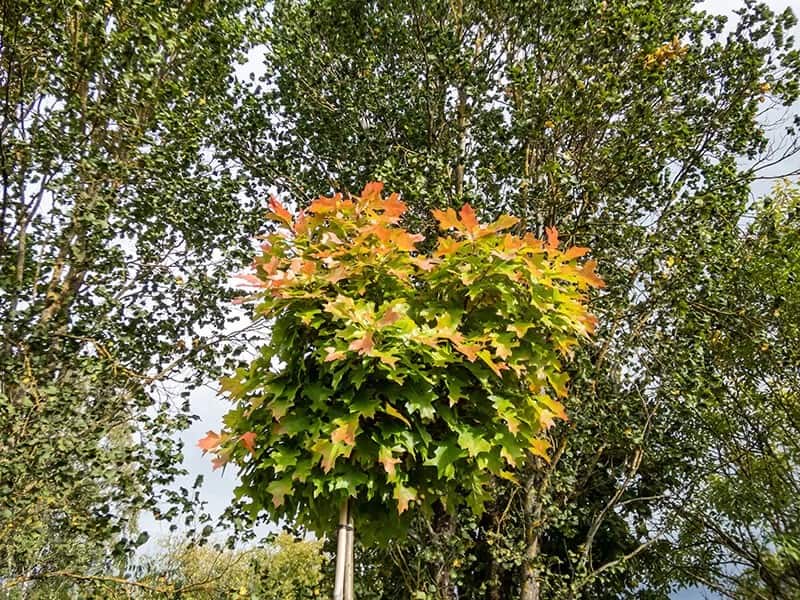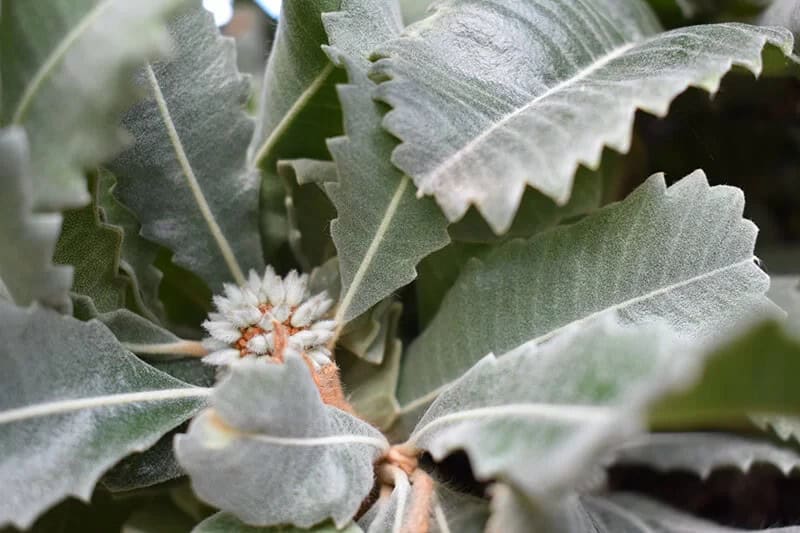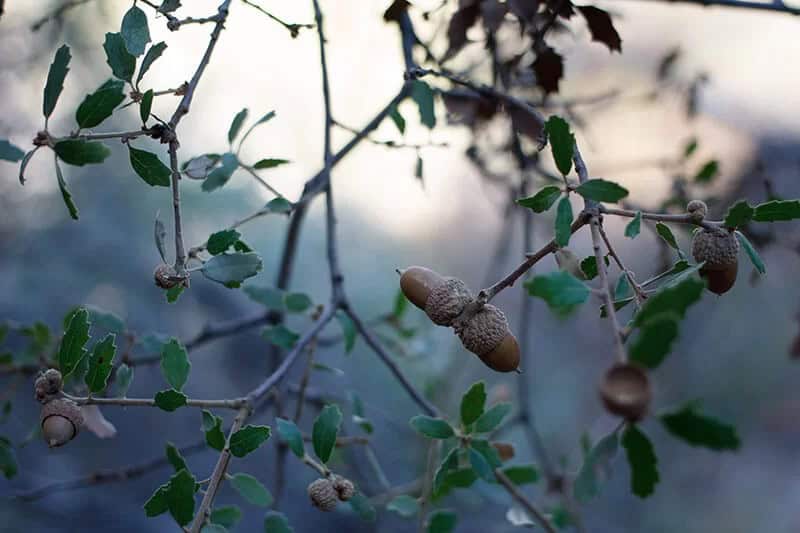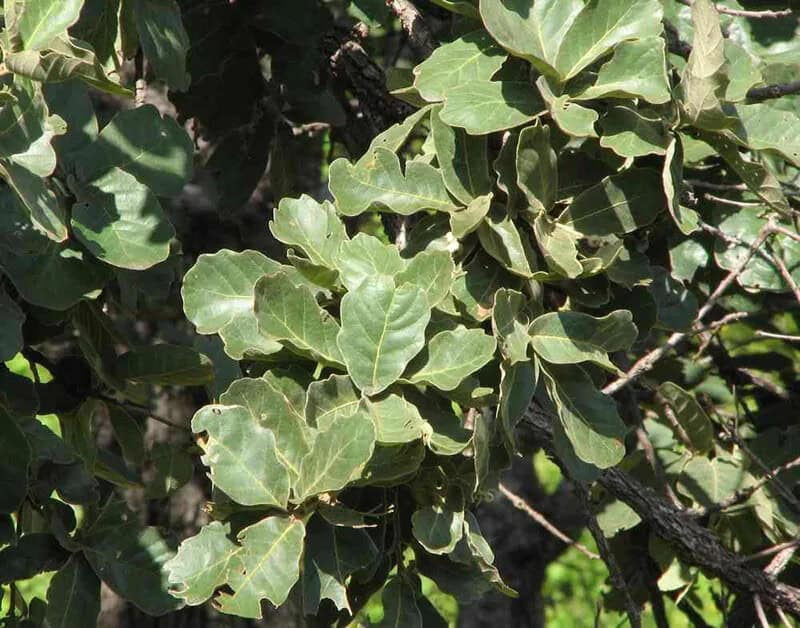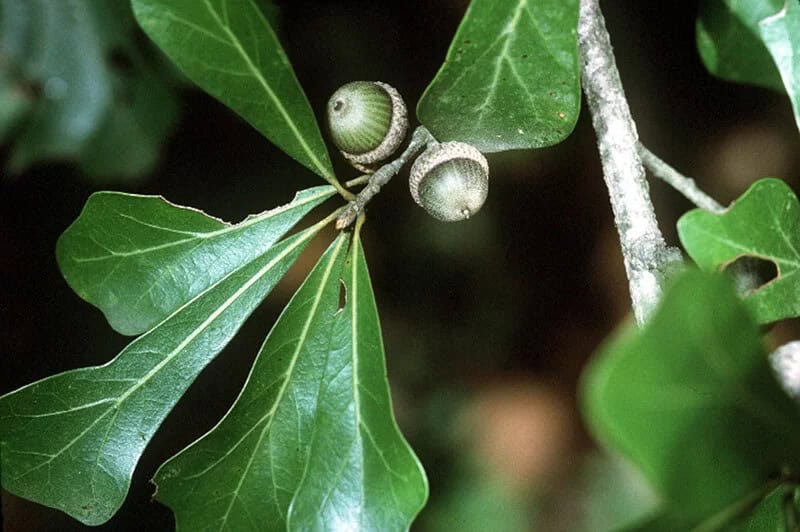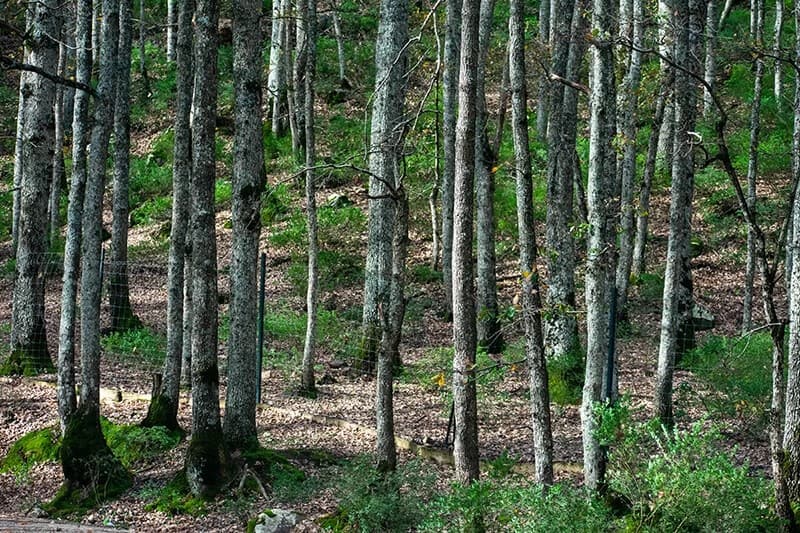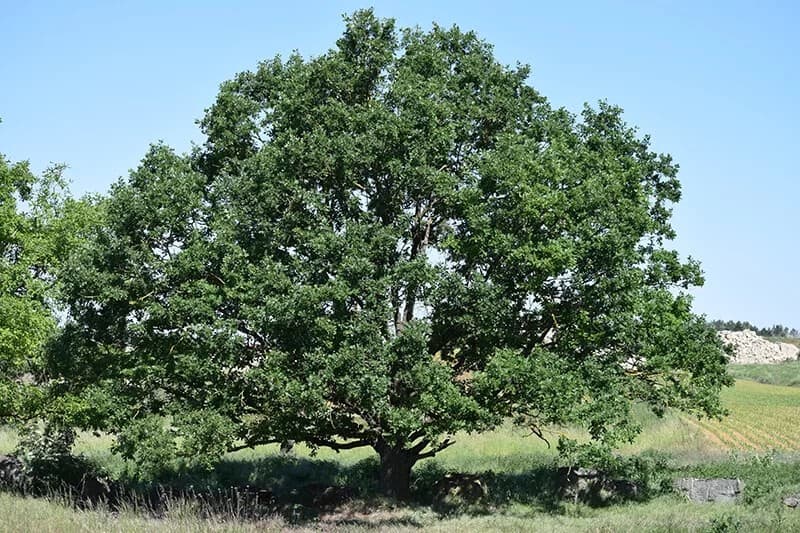The majesty of oak trees has left many of us in awe, with their stately presence and towering heights evoking feelings of wonder and connection. With their versatility in gardens and widespread distribution across the globe, oaks have earned a special place in our hearts. However, when considering these majestic trees for your own garden, it’s essential to understand that not all oaks are created equal.
Their incredible diversity offers a wealth of choices, allowing you to tailor your property’s unique character to its very own oak tree. This comprehensive guide aims to provide everything you need to know about oaks in one convenient resource.
Your Ultimate Guide to Oak Trees
This comprehensive guide delves into the diverse world of oak trees, offering insights into over 500 varieties that will captivate and inspire. You’ll gain a deeper understanding of these magnificent trees, exploring their unique characteristics, growing conditions, and practical applications. Whether you’re seeking shade, color, or simply wanting to bring nature’s beauty into your yard, this guide is designed to provide valuable information on the most revered and admired oak species.
From cool-climate dwellers to warm-weather enthusiasts, we’ve curated a list of top picks that cater to various climates and regions. By exploring this wealth of knowledge, you’ll be able to identify native species, determine which varieties thrive in your area, and discover multiple options for cultivation within your property. As you delve into the world of oak trees, you’ll gain a profound appreciation for their adaptability, utility, and sheer splendor.
Black Oak Tree (Quercus Velutina)
Native to North America, the black oak is a well-known and resilient species that thrives in a variety of soil types, including clay and silt. Its rugged bark and rounded leaf edges are reminiscent of many white oaks. One of its most notable features is its edible acorns, which grow abundantly and take up to two years to mature. This slow maturation process means you’ll often find black oak trees adorned with a gradual array of seeds.
Spring brings the tree’s vibrant flowers and pollen, while autumn reveals a deep-red hue as the leaves change colors.
Overcup Oak Tree (Quercus Lyrata)
The overcup oak is easily recognizable due to its robust physique, boasting a dense canopy that provides ample shade. Its unique characteristics make it an ideal choice for both large fields and smaller plots of land. As the tree matures, its bark develops a striking reddish hue, subtly accented with shades of brown and gray. The species is particularly notable for its long-lasting leaves, which possess a leathery texture and are densely packed.
In comparison to other oak varieties, overcup oaks tend to be medium-sized, growing no taller than 70 feet. One of the tree’s most striking features is its vibrant yellow foliage during the fall season, attracting wild animals seeking sustenance from its abundant acorns.
Shumard Oak Tree (Quercus Shumardii)

The Shumard oak’s unique pyramidal shape and striking autumn foliage make it a popular sight in urban areas. Its serrated leaves don’t grow too densely, making maintenance relatively easy compared to other species. Typically growing to heights of under 60 feet, this oak variety thrives in full sun. While it’s known for its vibrant red hues during fall, Shurmards also produce lively shades of orange. Interestingly, catkins precede the production of acorns on this tree.
Evergreen Oak Tree (Quercus Ilex)
With its picturesque crown spreading over 21 feet wide, the Holm oak tree is a popular choice among property owners seeking a long-lasting and resilient evergreen oak. This adaptable species boasts impressive resistance to common pests and diseases, making it an excellent option for those who want to grow a mature tree without worrying about frequent maintenance. While it can thrive in various light conditions, the Holm oak does require well-drained soil to flourish.
As it matures, this oak tree needs careful tending; however, once adapted and strong, it develops into a drought-tolerant and sturdy specimen that can withstand challenging environmental conditions.
Shingle Oak Tree (Quercus Imbricaria)
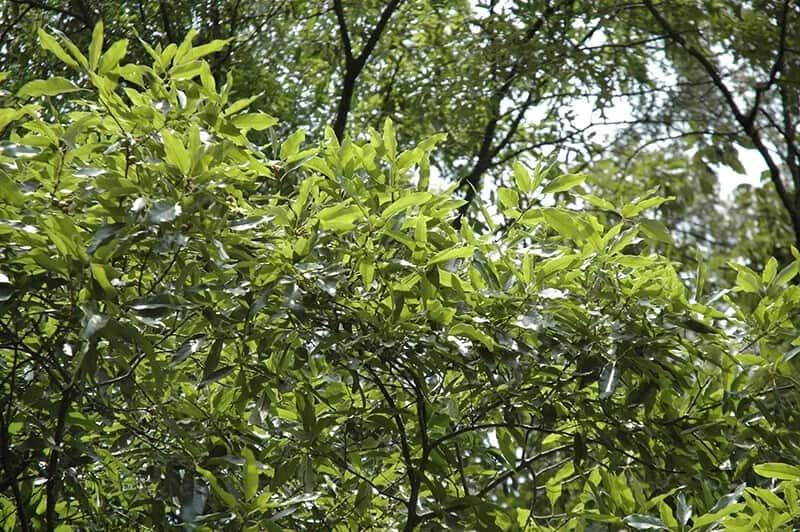
The shingle oak, a member of the red oak tree family, stands out for its unique foliage. Unlike typical oak trees, the leaves of the shingle oak are dark, thick, and remarkably durable, taking the shape of oval forms. The trunk of this deciduous tree can grow up to 3 feet wide, but as a whole, it remains among the smaller oaks in the family.
One notable characteristic is its ability to hold onto its leaves for most of the winter, with variable colors such as reds, yellows, and browns dominating the landscape. A hardy species, shingle oaks thrive in cold climates and are native to Illinois and other North American states.
White Oak Tree (Quercus Alba)
The majestic white oak tree stands tall among its counterparts, boasting an impressive stature that belies its slender appearance. With a rounded canopy and sparse, pyramidal characteristics, this slow-growing giant is distinguished by patches of foliage that create openings, adding to its unique charm. As one of the longest-living oak species, it’s not uncommon for white oaks to sport trunks as wide as 6 feet.
While their growth rate may be sluggish, these trees are remarkably resilient, with dense wood that withstands fierce storms and gusty winds with ease.
Boynton Sand Post Oak Tree (Quercus Boyntonii)

The sand post oak, also known as the Boynton oak, is a distinctive tree within the United States, characterized by its rust-hued leaves that retain their color throughout the spring and summer seasons. This unique seasonal appearance is one of the reasons why it’s classified as semi-evergreen – its foliage can persist well into winter, making it difficult to distinguish from summer growth.
A member of the Quercus family of oaks, Boynton oaks typically grow tall but remain relatively short at an average height of 12 feet, making them a popular choice for ornamental gardens and landscaping projects.
Chapman Oak Tree (Quercus Chapmanii)
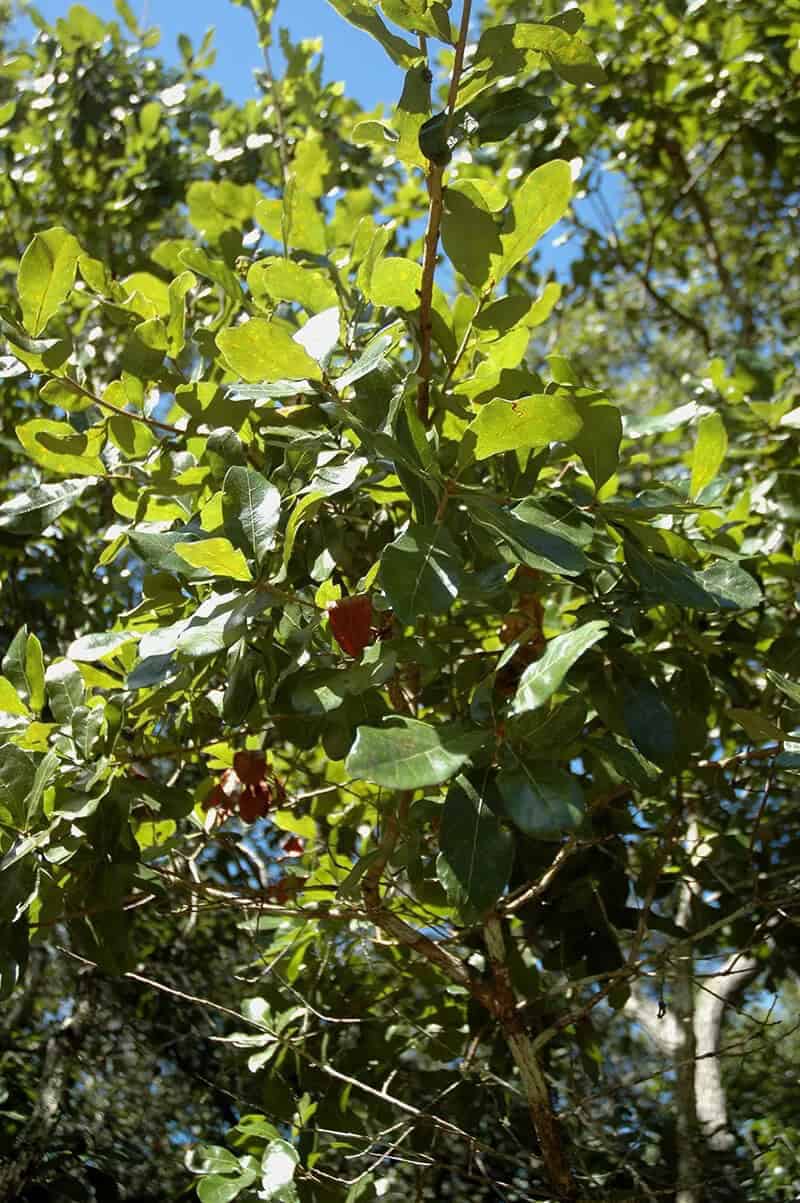
The Chapman oak, with its preference for sandy terrain and coastal regions, thrives in drier habitats. Its native range is confined to the U. S. South, where it reaches a height of approximately 30 feet. As winter approaches, the tree’s foliage transitions to shades of yellow and red, providing a striking contrast against the season’s dull backdrop. Notably, the Chapman oak is a tardy deciduous species, holding onto its leaves until spring, when it finally sheds them in a burst of renewal.
This characteristic makes it an attractive addition to any yard seeking a pop of color during winter’s quiet months. Beyond its aesthetic appeal, the Chapman oak has medicinal applications and ranks among the most commonly used oaks in traditional medicine.
Golden Oak Tree (Quercus Alnifolia)
Originally from Cyprus’ Troodos Mountains, the golden oak is well-suited to dry climates bathed in sunlight. In extreme cases, it can tolerate temperatures as low as -1°C, making it an adaptable species. The tree’s foliage is characterized by oval-shaped leaves, a trait shared with other oak varieties. However, like its peers, the golden oak also produces acorns. This process attracts butterflies and nectar-seeking birds to the flowers.
A unique feature of this tree is its shrub-like growth habit, which emits a pleasant scent. The thick, green leaves have a striking yellow underside, adding to the tree’s visual appeal.
Scarlet Oak Tree (Quercus Coccinea)
The scarlet oak’s striking winter colors, a deep purple to scarlet hue, make it an ideal centerpiece for any garden. This pyramidal species boasts a pointed top that tapers as you move up the branch structure from its wider base. While it can be pruned to maintain a manageable size, this ornamental oak typically grows no taller than 80 feet. A bonus of this tree is its adaptability – it will thrive in a range of soil types, so long as it receives at least six hours of direct sunlight per day.
Japanese Evergreen Oak Tree (Quercus Acuta)
The evergreen oak, a distinct variant within the Quercus family, stands out with its unique leaf appearance. The Quercus acuta, also known as the Oriental oak, boasts a smooth dark gray bark and is native to Asia. In contrast, the Japanese evergreen oak (which grows up to 45 feet tall) is cultivated primarily as an ornamental shrub. Its leaves are oval in shape with an olive hue and a distinctive yellowish tone on their reverse side.
Interestingly, the wood of this tree is remarkably dense, making it a popular choice among martial artists for mock weapon training. Prior to producing its acorns, the Japanese evergreen oak develops clusters of catkins, or pollen pods.
Chestnut Oak Tree (Quercus Montana)
The chestnut oak tree, standing at an impressive height of approximately 145 feet, boasts subtle yet significant differences that set it apart from other pure oaks. Upon closer inspection, the leaves of this magnificent tree appear oval in shape, but upon further examination, one can notice the rounded and serrated edges of its foliage. The chestnut oak’s bark features broad ridges with a reddish-gray hue, adding to its unique visual appeal.
Notably, this species produces seeds within just one year, with acorns initially appearing bright green before maturing into a rich brown color. This tree is also affectionately known as the mountain oak.
Coast Live Oak Tree (Quercus Agrifolia)
A majestic sight greets us in California’s landscape – the iconic coast live oak. Its expansive canopy is a defining feature, reaching heights of 80 feet and showcasing its unique, winding limbs. These twisting branches create a striking display that makes the coast live oak an attractive addition to any yard or a natural shelter from the sun.
A notable characteristic of this oak species is its ability to retain leaves throughout the winter months, thriving in the mild coastal climate where it prefers to grow near the shores. This unique environment allows the coast live oak to produce flowers year-round, unfettered by seasonal constraints.
Northern Red Oak Tree (Quercus Rubra)
The Northern red oak’s silhouette is characterized by a rounded or pyramidal shape, reflecting the unique personality of each tree. What sets this species apart is its striking transformation during the fall season, when its foliage transforms into a vibrant shade of red. A fast-growing specimen with potential for rapid growth – up to 2 feet per year over a decade-long period – the Northern red oak thrives in conditions that include ample water supply and strong, direct sunlight.
As the tree matures, it can develop a trunk width of up to 10 feet, making it a prominent feature in any landscape.
Palestine Oak Tree (Quercus Calliprinos)
The quercus calliprinos, commonly regarded as the most widespread oak species in Palestine and Israel, exhibits an extraordinary ability to thrive in warm to moderately dry climates. Its adaptability is further highlighted by its capacity to flourish even in limestone-rich environments. As a perennial shrub, it’s distinguished by its copious production of large acorns, measuring over an inch and a half in length.
The leaves, while resembling those of common oak trees, boast a broader oval shape with serrated edges. Notably, the quercus calliprinos remains compact in size as it grows, rarely exceeding 30 feet in height. When cultivated as a hedge, its unique characteristics make it a visually appealing addition to any landscape.
Canyon Live Oak Tree (Quercus Chrysolepis)
Canyon oaks, native to California, have a unique preference for growing near streams and springs. Initially, it may be mistaken for a citrus plant due to its appearance, but the clusters of acorns it produces are a dead giveaway to its species. Not only do these oak trees produce edible and healthy acorns, but they can also thrive as a shrub or grow up to 100 feet tall in ideal conditions.
One of the notable characteristics of canyon oaks is their ability to flourish even in rocky soil, with a full canopy that spreads horizontally rather than vertically.
Pin Oak or Swamp Spanish Oak Tree (Quercus Palustris)
The pin oak’s remarkable adaptability stems from its ability to flourish in challenging swampy environments. This versatility, however, is not limited to its natural habitat. In fact, it’s a popular choice for landscaping due to its rapid growth rate and ease of transplantation. This means property owners can successfully cultivate the pin oak even in areas where it might not typically thrive. Notably, the tree’s trunk can reach widths of approximately 3.
5 feet and heights of nearly 80 feet tall. One distinctive feature of the pin oak is its rough, loosely-encased bark that wraps around the trunk.
Swamp White Oak Tree (Quercus Bicolor)
While some oak tree varieties exhibit branch structures that appear to crawl along the ground, others like the swamp white oak belong to a different family altogether. The swamp oak, in particular, produces acorns and features white oak bark, characteristics that identify it as a true oak species. This versatile white oak is well-suited for cultivation throughout the United States, but its adaptability should not be taken as permission to plant it in areas prone to long-term flooding.
Instead, it thrives in environments where natural water sources allow for a steady flow and oxygenation of the soil. Furthermore, this white oak variety is an excellent choice for timber production, making it a valuable addition to any landscape or forestry project.
Persian Oak—Brant’s Oak Tree (Quercus Brantii)
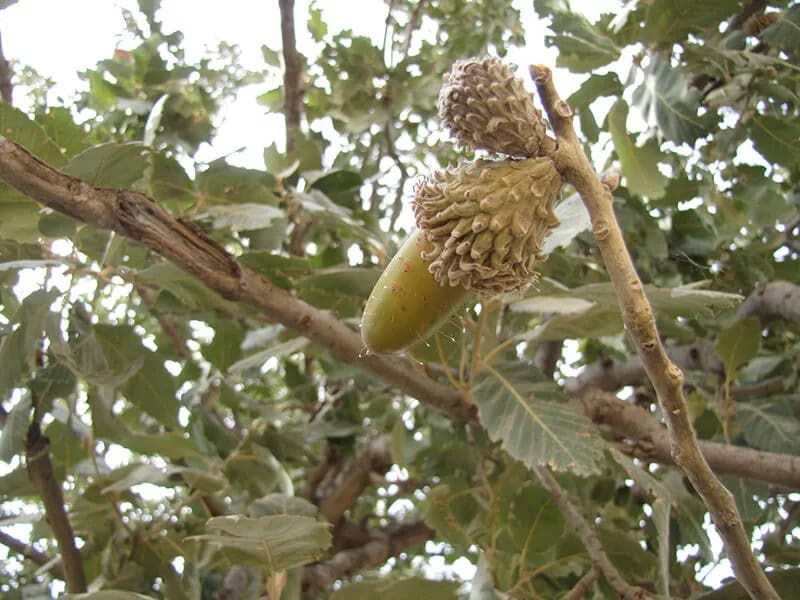
The Brant’s oak, also known as the Persian oak, has its origins in Western Asia and has been utilized in traditional holistic medicines for centuries. One of its most distinguishing features is the large, plump acorn that it produces. The tree’s leaves grow in thick clusters, with each individual leaf being relatively thin and of medium size. Interestingly, the Persian oak thrives in high-altitude environments where there is constant air movement, earning it the nickname ‘mountain oak’.
Its drought-resistant properties also enable it to withstand dry spells without suffering from stunted growth or fatigue. Notably, despite its ornamental value, the Brant’s oak can grow up to 100 feet tall.
Willow Oak Tree (Quercus Phellos)
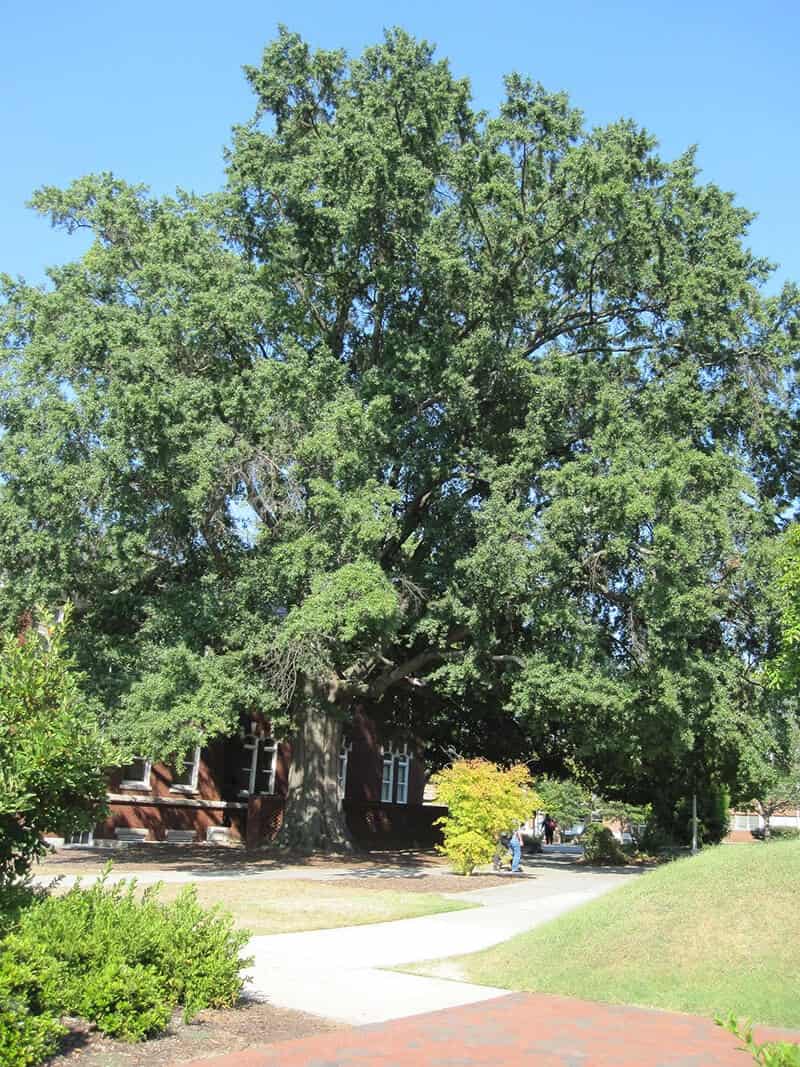
The Willow Oak’s unique characteristics are reminiscent of its namesake, the weeping willow tree. Its needle-like leaves, arranged in thin bunches, provide natural shelter for clusters of acorns from the sun. This majestic tree can grow to impressive sizes, rivaling those of common oak trees. As autumn arrives, the ‘willow leaves’ transform into a brilliant yellow with subtle hints of rusty brown.
The small size and lightweight nature of these leaves make them susceptible to being swept away by the wind, leaving homeowners with minimal yard work to enjoy during this season.
Blackjack Oak Tree (Quercus Marilandica)
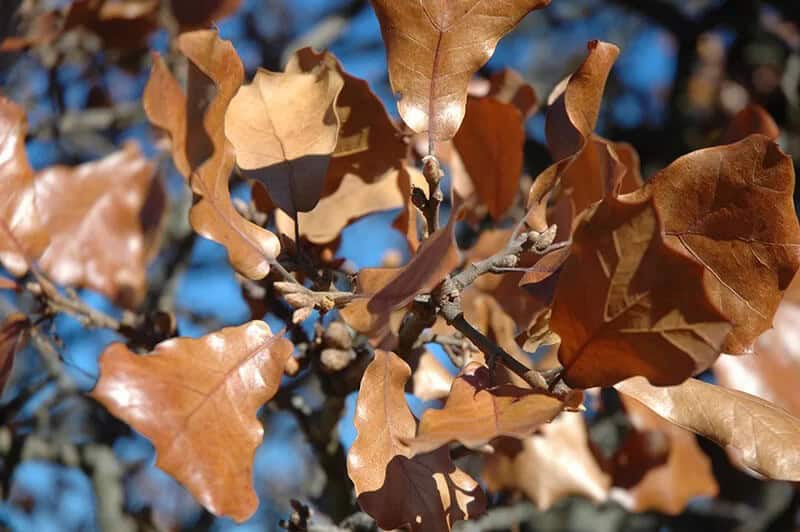
The blackjack oak, as captured by Bruce Kirchoff on flickr. com, boasts a notable trait – its wood is ideal for barbequing, allowing for high temperatures. This deciduous tree stands at a medium height of no more than 50 feet, characterized by its nearly black trunk and dense canopy of branches and limbs. This unique combination makes it an excellent choice for shading lawns. The leaves are also distinctive, featuring a rectangular shape that broadens towards their tips.
As the seasons change in autumn, the foliage transitions from bright yellow to red hues before settling into earthy tones with subtle rust undertones.
Ajo Mountain Scrub Oak Tree (Quercus Ajoensis)
The mountain scrub oak’s foliage can easily be mistaken for holly, but its leaves lack the sharp points that typically characterize holly. Instead, this bush boasts a visually appealing clustering of leaves that makes it a great addition to any garden design. Each year, it produces acorns that are no larger than your fingernails or roughly half their size. As a mountain-dwelling species, it thrives in elevated climates, but surprisingly, it also flourishes across various regions of California.
One notable difference between the mountain scrub oak and its more common counterparts is its compact, branch-filled stature – a characteristic that sets it apart from other oak varieties.
Chihuahua Oak (Quercus Chihuahuensis)
The Chihuahua oak’s namesake inspiration stems from both the Mexican state and the diminutive lapdog of Latin America. In stark contrast to its namesakes’ petite stature, this majestic tree can be found thriving in high elevations between 1,300 and 6,600 feet above sea level. Despite not reaching towering heights – it typically caps out at a modest 33 feet – this oak is an essential part of the beech family.
Its smooth, rich brown bark sets it apart from its fellow oaks, while fuzzy, hair-like pistillates adorn its leaves like a delicate ornament.
Water Oak (Quercus Nigra)
The Water Oak (Quercus nigra) is a striking addition to any garden, offering a unique opportunity to cultivate a rare and majestic species on one’s property. Its leaves are characterized by their waxy texture and dense, sculpted appearance, which bears subtle resemblance to those of the common oak. A distinctive blue-green hue is also present in the foliage.
This versatile tree can be found growing along the coasts of New Jersey and Texas, and in warmer climates, it takes on an evergreen quality. However, it thrives best in lower elevations with ample moisture. Reaching heights of up to 100 feet, its stature makes it well-suited for swampy environments. Also known as the Water Oak, this species is a notable feature of any landscape.
Bur Oak (Quercus Macrocarpa)
With its stately presence, the bur oak tree stands as a venerable giant among oak species. Its rugged appearance is characterized by a thick, deeply grooved trunk cloaked in nearly black bark, giving testament to its advanced age. Reaching heights exceeding 100 feet, this majestic specimen spreads its canopy wide, supporting a dense foliage of leaves that measure over 9 inches in length. The rounded lobes of the leaflets are smooth at their tips, a feature shared with other white oak varieties.
In autumn, the bur oak yields acorns that rival chestnuts in size and appearance, measuring up to 1.5 inches in length and half an inch in width.
Mirbeck’s Oak, Algerian Oak (Quercus Canariensis)
The Algerian oak, also known as the Mirbeck oak, is a versatile species that thrives in its natural habitat around the Mediterranean region. Countries like Morocco, Spain, and Algeria provide the ideal environment for this tree to flourish. However, with adequate sunlight and warmth, it can be successfully planted in other locations as well. One notable exception is that it remains evergreen only when planted in warmer climates where temperature drops or draughts are minimal.
Over time, this variety of quercus canariensis can develop a trunk width of up to 5 feet and reach heights between 80-100 feet tall. The leaves of the Algerian oak are characterized by their greenish-blue hue.
Sessile Oak (Quercus Petraea)
The Sessile oak, with its botanical emblem status across Europe, boasts a range of names including Irish and Cornish oak. This majestic tree thrives in diverse climates, but excels when given ample space to grow. As part of the massive white oak family, it can reach towering heights of up to 131 feet. Its presence is unmistakable, whether planted intentionally or growing wild.
The Sessile oak proves particularly resilient in acidic and sandy soils, even finding a way to flourish amidst rocks and stones. To realize its full potential, this oak requires consistent rainfall or regular watering.
Frequently Asked Questions About Types of Oak Trees
How many different types of oak trees are there in the world?
There are approximately 500 distinct types of oak trees globally, with the Quercus genus being the family tree from which oaks originate. As both a tree and a shrub, this versatile plant has numerous uses due to its adaptability. While some oak species exhibit evergreen qualities, they primarily inhabit the Northern Hemisphere. Notably, the American Great Oak is most prominent in Canada and the United States, with China hosting an impressive 100-plus species of oaks.
Which oak trees grow in Florida?
In the South, oak trees are renowned for their grandeur, with branches sprawling out into massive limbs. Among the top three species in Florida are willow oak, Shumard oak, and Northern red oak. The willow oak stands tall but with a slender physique, its foliage moderate in density. In stark contrast, the Shumard oak boasts a sturdy trunk and a thick, lush canopy. Meanwhile, the Northern red oak’s impressive girth is largely due to its extensive leafy crown.
Other notable varieties in Florida include the chapman, black, laurel, chinkapin, and bluff oak trees.
What type of oak trees grow in California?
California is home to a diverse array of oak species, with 20 distinct varieties found throughout the state. These trees thrive in warm, dry climates, where they can grow up to an impressive height of over 100 feet. In fact, some species like the valley oak can reach towering heights and live for centuries, with some specimens boasting a life expectancy of up to 300 years.
Native to Sacramento county, these majestic oaks are often found in mountainous terrain and gentle creeks, where they have developed a rugged yet elegant appearance over time. With a little creativity, even hybrid oaks can be cultivated by Floridian gardeners, adding an extra layer of variety to the state’s already rich oak landscape.
What type of oak trees grow in Texas?
In Texas, several types of oak trees thrive in the local climate. Among them are Mexican, bur, and Lacey oaks. While each has its unique characteristics, they all share one thing in common – a strong ability to grow well in this region. The Mexican oak is particularly notable for its rapid growth rate, reaching heights of around 45 feet before levelling off. Its leaves are also distinct due to their serrated edges, setting it apart from other oak varieties.
In contrast, the Lacey oak is better suited for smaller spaces, with a maximum height of approximately 30 feet. Its bluish leaves add a pop of color to its surroundings and provide ample shade thanks to its dense canopy. Meanwhile, the bur oak stands out for its impressive stature, reaching heights of around 100 feet – making it an ideal choice for those looking to make a statement in their landscaping.
Which kinds of oak trees have acorns?
When an oak tree is present, it will inevitably produce acorns. The time it takes for these seeds to mature varies depending on the specific species. Red oaks, characterized by their red foliage during fall and serrated leaf pattern, take two seasons to produce mature acorns. In contrast, white oaks with rounded leaves require only a single season to mature their acorns. A distinctive feature of red oaks is their smooth bark, whereas white oaks display aged and rugged appearance.
Both species produce acorns annually.
For how long do oak trees live?
White oaks and red oaks, when given ideal conditions, have an impressive lifespan, with white oaks capable of living up to 600 years, while red oaks can thrive for more than 400 years. The key to their longevity is not some magical formula, but rather the result of simple care and maintenance.
Every acorn contains the genetic code for a thriving tree, but it’s the subtle nuances that make all the difference – deep top soil, adequate rainfall, and essential nutrients provide the foundation for healthy growth. Additionally, ensuring the tree has the right climate for its species is crucial. A sense of comfort and familiarity can be just as vital as sunlight and water, allowing the tree to flourish and reach maturity.
27 Eclectic Types of Oak Trees
When considering the addition of trees to your property, oak species are certainly worthy of consideration. It’s crucial to choose a tree that not only grows well in your specific climate zone but also has the resilience to withstand the rigors of local weather conditions. Oak trees, for instance, have a remarkable lifespan and can prove surprisingly durable in the face of storms or high winds.
By investing time and effort into nurturing your oak tree, you’ll be rewarded with a stunning visual display as it thrives. You may even find yourself with sufficient space to experiment with growing timber, and oaks are known for producing reliable and sturdy wood.
